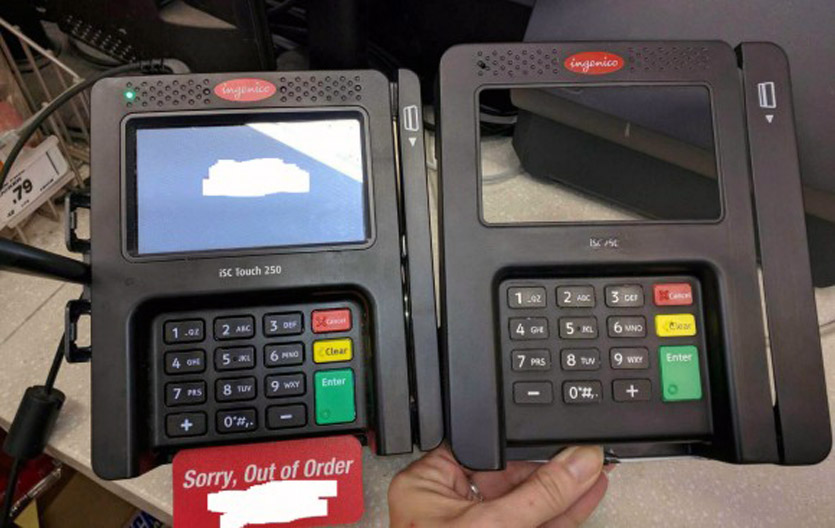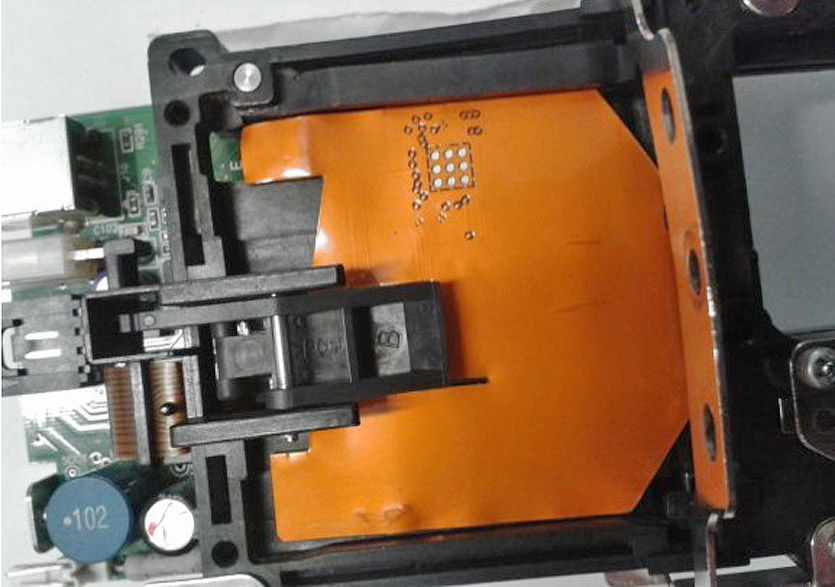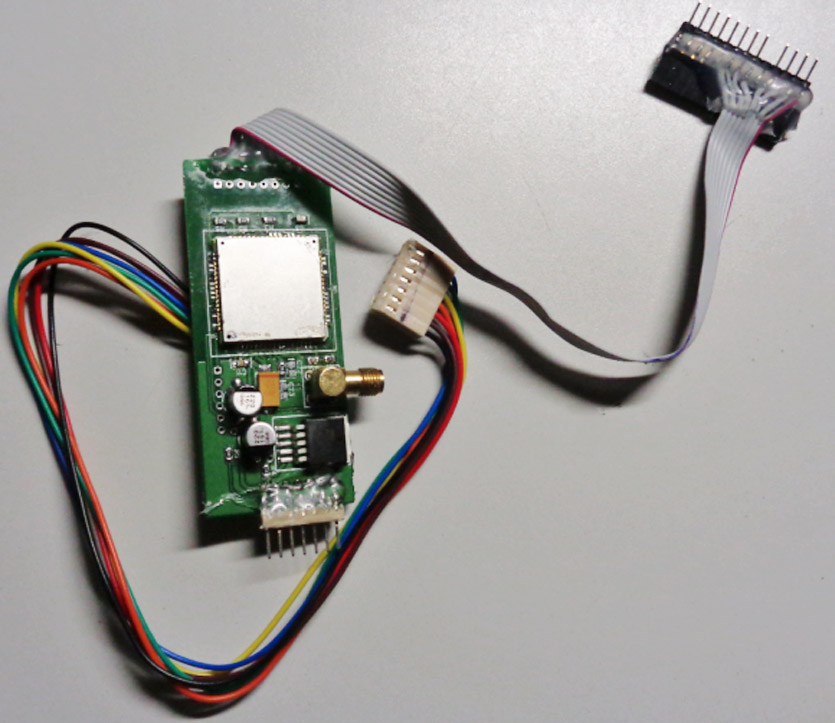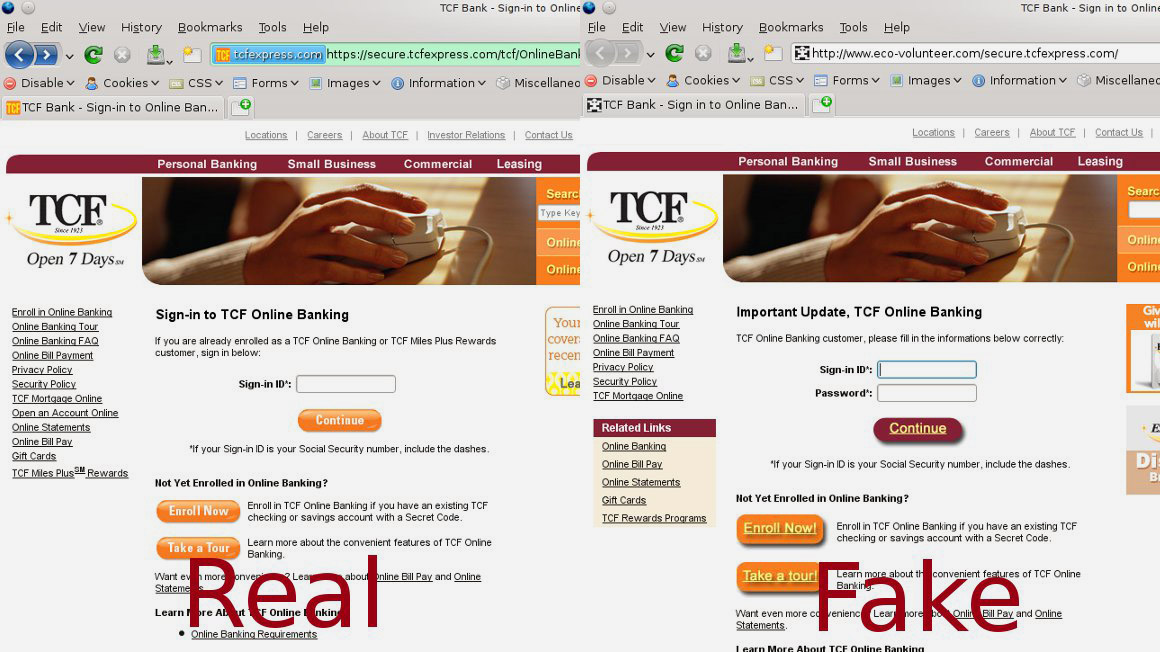Tomcat
Professional
- Messages
- 2,688
- Reaction score
- 1,015
- Points
- 113
Bank card fraud is a popular business on the dark web - carding. As you might guess, there is exactly zero legality in it. Alas, this does not prevent him from developing to his fullest.
We tell you how and where bank card data is obtained on the darknet. And what happens to them next.

A bank card has a magnetic stripe from which ATMs, terminals and other devices read information. You know that for sure.
But if you install your own reader on the ATM, the data will not reach the bank.
Such readers are called skimmers. Usually this is a slot for reading data from a magnetic stripe and a fake keyboard for stealing a PIN code.
They can use a camera instead of a keyboard : it is inexpensive and suitable for any ATM. And the keyboard has to be selected for a specific ATM model.

The chip on the card does not protect against skimmers. Above is an example of what a skimmer for cards with a chip looks like.
This method is often abused in cafes, gas stations, and at supermarket checkouts. And most importantly, the victim would rather think of a virus that infected his computer while making an online payment than going to the store.
Seleznev was given 27 years in prison. Don't be like Roman.

The option with a skimmer is also possible, but rather theoretically. The reader on a small terminal, which is always in front of your eyes, is too noticeable.
But in the USA, there was a whole epidemic at gas stations with skimmers that were introduced into terminals.
It’s even easier to photograph the front and back sides of the card while the client is not looking.

You can create a website that looks exactly like the original one for less than $100. The app is a little expensive. A separate page will be drawn in a couple of hours and a thousand rubles.
Most often, websites and applications of banks are copied, less often of popular online stores. The most expensive thing in this scheme is to buy or develop a phishing application or organize a mailing to the desired database.
Fraudsters need to distribute a link to a phishing site or application and force the user to enter access data into a fake form.
Additionally, phishing apps often intercept SMS messages for authentication purposes . All this is enough to completely remove money from your bank account.
For example, Western retailer Sears and Delta airlines admitted that their chat support contractor was hacked, resulting in customers suffering. About 100 thousand card records from Sears and a comparable amount of data from Delta were leaked.
Another example is the premium American retailers Saks Fifth Avenue and Lord & Taylor . Hackers hacked their payment system and collected data on 5 million bank cards . 125 thousand map records were put up for sale.
People who dress in stores are not poor. So even if 125 thousand records are multiplied by $10 thousand on average in the account, you don’t have to work anymore. Never.
There are enough tools for this, you don’t even need to go to the darknet. As a result, not only your Facebook account will be taken away, but also money from your bank account.
Then suddenly you get a call from allegedly representatives of the bank and, under the pretext of increasing security / unblocking the card / confirming the payment, they force you to give out all the information about the card or online banking account.
It is extremely difficult to cancel the operation and prove that the account owner is not at fault in such cases. After all, it turns out that you nominally confirmed the operation with the code, nothing unauthorized happened.
Allegedly, a representative of the financial institution contacts the user who asked the question in the official group or on the bank’s page. Promises a solution to the problem. Or mountains of gold, a loan at a humane 5% per year and the like.
To continue, it asks for card details, account details, online banking account details, security questions or anything else that will allow you to “confirm your identity”. We bet you know what will happen next?
The developers, of course, attributed everything to improvementsand “we do everything for the user, I swear to my mother”, but the fact remains a fact. We will tell you soon in a separate article what other applications steal bank data.
Or, to avoid getting caught, they order goods or gift certificates from online stores using your card. While the victim recovers, they manage to reset the card and get into the maximum overdraft.
Almost all online banks and applications of Russian banks allow you to do this instantly without unnecessary confirmation. You will explain the situation later. I’ll leave a few examples for a couple of large Russian banks.
2. Select "Block".
3. Fill out the application creation form and click “Block”.
4. Click “Confirm via SMS”, enter the one-time password that the bank will send to you.
If you cannot access the Sberbank application or website:
1. Log in to the service, hover over the field with the active card.
2. Click “Block”, confirm.
Or select “My cards” -> “Block card” in the main menu. This works similarly in the mobile application.
If you don’t have an application or browser at hand, you can send the SMS message “block” to the number 2265. In response, you will receive a list of cards with the last four digits of each of them.
Send the second message: “block *xxxx”, where xxxx is the last four digits of the card number to be blocked.
A phone call to 0 800 50-20-50 also helps . Finally, cards are blocked at Alfa Bank offices. As well as any other bank that issued your card.
Do not give anyone more than your card number. This is enough to transfer money.
Inspect the ATM before inserting a card into it. If some parts look newer than others or aren't the right color, don't spend money on it.
Do not try to unblock your card using a link from an e-mail or a message in the messenger. If a problem arises, call the bank at the number indicated on your card.
Use two-factor authentication wherever possible.
Do not write down bank card PINs on paper. And even more so on the card itself or in the wallet. Yes, this happens all the time.
Don't give the card to anyone. Better yet, switch to a card with a chip for contactless payment or Apple Pay, Android Pay, Samsung Pay.
Do not use online banking over open Wi-Fi. And generally via Wi-Fi. Finally, if you receive a call from the bank, listen, record the conversation and call back to the official bank number that is listed on your card.
Look at 2IP.ru whois of the domain, contact the hoster, report phishing.
The manufacturer officially admitted that “some users were affected.”
And in the beta of the OxygenOS Open Beta 2 firmware , they found an interesting function of the clipboard application: the badword.txt file contained many keywords like address, email, home, birthday.
Other files revealed that OnePlus was sending IMEI and other information to the servers of teddymobile, a company that identifies users via SMS messages.
So sometimes it’s enough just to buy the wrong smartphone to leak your own bank card data.
PS Every time you share this article, phishers have a dozen fewer victims. Take care of yourself and your loved ones.
(c) Ksenia Shestakova

 www.iphones.ru
www.iphones.ru
We tell you how and where bank card data is obtained on the darknet. And what happens to them next.
Note: All information in this article is provided for informational purposes. Remember that any actions with other people's cards are a criminal offense.
Main question. How do you get someone else's card details?
There are a lot of methods. Many of them can be recognized with experience, but some can only be recognized manually, by rummaging around the ATM or noticing something wrong with it in advance.1. They install skimmers on ATMs

A bank card has a magnetic stripe from which ATMs, terminals and other devices read information. You know that for sure.
But if you install your own reader on the ATM, the data will not reach the bank.
Such readers are called skimmers. Usually this is a slot for reading data from a magnetic stripe and a fake keyboard for stealing a PIN code.
They can use a camera instead of a keyboard : it is inexpensive and suitable for any ATM. And the keyboard has to be selected for a specific ATM model.

The chip on the card does not protect against skimmers. Above is an example of what a skimmer for cards with a chip looks like.
2. They steal through cash registers and terminals
POS terminals are things that you touch your iPhone or swipe your card when you pay for a purchase. If you install malware on them , then the data from your bank card can simply be stolen.This method is often abused in cafes, gas stations, and at supermarket checkouts. And most importantly, the victim would rather think of a virus that infected his computer while making an online payment than going to the store.
The most famous Russian carder, Roman Seleznev, also stole card data in batches in the United States. Sometimes they were simply stored in text files on point-of-sale computers.Recently, three citizens of Ukraine were arrested for stealing data from 15 million (MILLION!!!) cards. They infected computers with cash registers, then sent letters from the US Securities and Exchange Commission and from various hotels.
Seleznev was given 27 years in prison. Don't be like Roman.

The option with a skimmer is also possible, but rather theoretically. The reader on a small terminal, which is always in front of your eyes, is too noticeable.
But in the USA, there was a whole epidemic at gas stations with skimmers that were introduced into terminals.
3. Remember card data
In bars, restaurants and cafes, waiters often take your card with them and take it to the cash register. It's easy to remember the number, expiration date and CVC/CVV codes along the way.It’s even easier to photograph the front and back sides of the card while the client is not looking.
4. They use phishing apps and websites

You can create a website that looks exactly like the original one for less than $100. The app is a little expensive. A separate page will be drawn in a couple of hours and a thousand rubles.
Most often, websites and applications of banks are copied, less often of popular online stores. The most expensive thing in this scheme is to buy or develop a phishing application or organize a mailing to the desired database.
Fraudsters need to distribute a link to a phishing site or application and force the user to enter access data into a fake form.
Additionally, phishing apps often intercept SMS messages for authentication purposes . All this is enough to completely remove money from your bank account.
48% of users are targeted by phishing emails . Almost every second one. Perhaps you were caught once, you just didn’t notice.There are hundreds of phishing sites - the Sberbank security service alone identified and blocked 600 domains.
5. Websites of online stores, air carriers, etc. are hacked.
When ordering goods or tickets on the Internet, you can lose money not only on a fake site, but also on a real site. Such cases are relatively rare and are often made public.For example, Western retailer Sears and Delta airlines admitted that their chat support contractor was hacked, resulting in customers suffering. About 100 thousand card records from Sears and a comparable amount of data from Delta were leaked.
Another example is the premium American retailers Saks Fifth Avenue and Lord & Taylor . Hackers hacked their payment system and collected data on 5 million bank cards . 125 thousand map records were put up for sale.
People who dress in stores are not poor. So even if 125 thousand records are multiplied by $10 thousand on average in the account, you don’t have to work anymore. Never.
6. Intercept data in open Wi-Fi networks
Free Wi-Fi is unsafe. And home routers are often hacked by people on the street.There are enough tools for this, you don’t even need to go to the darknet. As a result, not only your Facebook account will be taken away, but also money from your bank account.
6. They call you and introduce themselves as a bank employee
Your bank card number is found on an announcement site, a post for collecting donations, and even in a WhatsApp chat, where everyone chips in for flowers by September 1st.Then suddenly you get a call from allegedly representatives of the bank and, under the pretext of increasing security / unblocking the card / confirming the payment, they force you to give out all the information about the card or online banking account.
It may not work on you. But less experienced users like your grandmother are usually scammed this way.The most important point: scammers, under the guise of a bank employee, ask for a transaction confirmation code that will be sent via SMS.
It is extremely difficult to cancel the operation and prove that the account owner is not at fault in such cases. After all, it turns out that you nominally confirmed the operation with the code, nothing unauthorized happened.
7. A bank employee wants to help in a social network PM.
Victims are found on banks VKontakte pages and on forums.Allegedly, a representative of the financial institution contacts the user who asked the question in the official group or on the bank’s page. Promises a solution to the problem. Or mountains of gold, a loan at a humane 5% per year and the like.
To continue, it asks for card details, account details, online banking account details, security questions or anything else that will allow you to “confirm your identity”. We bet you know what will happen next?
8. Collect information through harmless applications
It happens. The recent scandal surrounding Burger King is proof of this.The developers, of course, attributed everything to improvementsand “we do everything for the user, I swear to my mother”, but the fact remains a fact. We will tell you soon in a separate article what other applications steal bank data.
So, your bank card information was stolen. What happens next?
Most often they are used by carders. They directly drain money from your account to theirs (another stolen card, random drop card, etc.).Or, to avoid getting caught, they order goods or gift certificates from online stores using your card. While the victim recovers, they manage to reset the card and get into the maximum overdraft.
Okay, let's say my data was stolen. What to do?
At the first suspicion, IMMEDIATELY block the card or the entire account. Drop everything, urgently.Almost all online banks and applications of Russian banks allow you to do this instantly without unnecessary confirmation. You will explain the situation later. I’ll leave a few examples for a couple of large Russian banks.
Sberbank, Sberbank Online:
1. On the main page in the list of cards or on the page with information about the card, click “Operations” opposite the desired card.2. Select "Block".
3. Fill out the application creation form and click “Block”.
4. Click “Confirm via SMS”, enter the one-time password that the bank will send to you.
If you cannot access the Sberbank application or website:
- Call the support number: 900 from any mobile phone, 7 495 500 5550 in Moscow, 8 800 555 55 50 from any other city in the Russian Federation. Works around the clock.
- Sending an SMS to number 900. Format: BLOCKING****X”, where **** are the last digits of the bank card number, and X is the reason for blocking. 0 means the card is lost; 1 – suspicion of theft; 2 – the ATM did not return the card; 3 – other reasons. Wait for an SMS with a confirmation code. You will have 5 minutes to send it back, otherwise the card will not be blocked.
- Visit to a bank branch. You need to have a passport or other document with a photo with you.
- Entering an incorrect PIN code. Three times.
Alfa Bank
In the Alfa Click online bank, you can block a card from the “Cards” page.1. Log in to the service, hover over the field with the active card.
2. Click “Block”, confirm.
Or select “My cards” -> “Block card” in the main menu. This works similarly in the mobile application.
If you don’t have an application or browser at hand, you can send the SMS message “block” to the number 2265. In response, you will receive a list of cards with the last four digits of each of them.
Send the second message: “block *xxxx”, where xxxx is the last four digits of the card number to be blocked.
A phone call to 0 800 50-20-50 also helps . Finally, cards are blocked at Alfa Bank offices. As well as any other bank that issued your card.
Don’t forget to also change any logins and passwords that might fall into the hands of scammers.Remember: seconds count! The sooner you block your card, the less chance criminals have. Any compromised card should be reissued.
Useful tips. How to prevent your card details from being stolen?
Be careful when following links. Check the address in the address bar and the authenticity of the form in the application.Yes, 78% of users know that it is dangerous to follow suspicious links. But 56% still follow links from e-mail , 40% follow links on Facebook. The threat is closer than you think.According to Google statistics, 12.4 million users in 2017 became victims of phishing.
Do not give anyone more than your card number. This is enough to transfer money.
Inspect the ATM before inserting a card into it. If some parts look newer than others or aren't the right color, don't spend money on it.
Don’t believe in sales of air tickets for pennies, 80% discounts on fake sites, loans at 1% per month from microfinance organizations. It seems obvious, but how many are deceived!There is less chance of running into a skimmer at an ATM in a bank branch, in the lobby of a decent hotel or other hall with reliable security.
Do not try to unblock your card using a link from an e-mail or a message in the messenger. If a problem arises, call the bank at the number indicated on your card.
Use two-factor authentication wherever possible.
Do not write down bank card PINs on paper. And even more so on the card itself or in the wallet. Yes, this happens all the time.
Get a separate card for online payments and small expenses. Transfer money directly to it for expenses.I did this myself: erase or paint over the CVV2 code on the back of the card . Just remember it beforehand. If you forget, you can restore it in the bank or make a request in some banking applications.
Don't give the card to anyone. Better yet, switch to a card with a chip for contactless payment or Apple Pay, Android Pay, Samsung Pay.
Do not use online banking over open Wi-Fi. And generally via Wi-Fi. Finally, if you receive a call from the bank, listen, record the conversation and call back to the official bank number that is listed on your card.
What else can you do to protect yourself?
Report a phishing site to Yandex.Look at 2IP.ru whois of the domain, contact the hoster, report phishing.
And one last important example
In January 2024, the website of smartphone manufacturer OnePlus was hacked and customers bank card data was stolen for several months .The manufacturer officially admitted that “some users were affected.”
And in the beta of the OxygenOS Open Beta 2 firmware , they found an interesting function of the clipboard application: the badword.txt file contained many keywords like address, email, home, birthday.
Other files revealed that OnePlus was sending IMEI and other information to the servers of teddymobile, a company that identifies users via SMS messages.
So sometimes it’s enough just to buy the wrong smartphone to leak your own bank card data.
PS Every time you share this article, phishers have a dozen fewer victims. Take care of yourself and your loved ones.
(c) Ksenia Shestakova

Как можно украсть данные вашей банковской карты
Рассказываем, как и где в даркнете получают данные банковских карт. И что с ними происходит дальше.
